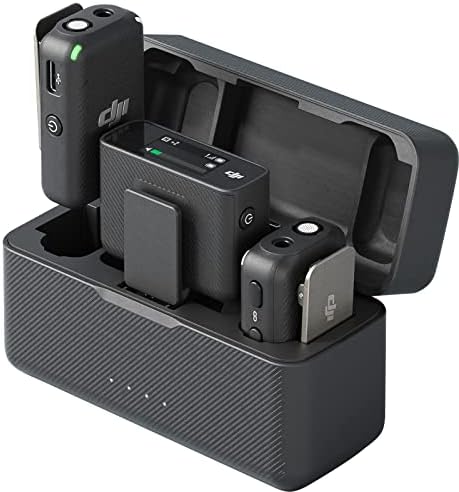Do You Need a FAA License to Fly a Drone?

In recent years, drones have become increasingly popular among hobbyists and professionals alike. These unmanned aircraft systems (UAS) offer exciting opportunities for aerial photography, videography, and exploration. However, it’s crucial to understand the regulations set forth by the Federal Aviation Administration (FAA) to ensure safe and responsible drone operation. One common question that arises is: “Do you need a FAA license to fly a drone?” In this blog post, we will delve into the answer to this question and provide valuable insights for drone enthusiasts, FAA regulations, and those interested in aerial photography.
Overview of FAA Regulations
The FAA is the governing body responsible for regulating civil aviation within the United States. Their primary goal is to ensure the safety and efficiency of the national airspace system. To achieve this, the FAA has established specific regulations for operating drones, both for recreational and commercial purposes.
For recreational drone pilots, the FAA has set some key regulations to follow. These include flying at or below 400 feet in uncontrolled airspace, maintaining visual line of sight with the drone, and avoiding flying near airports or other restricted areas. Additionally, recreational drone pilots should be aware of the FAA’s “Fly Safe” guidelines, which promote responsible and considerate drone operation.
When is a FAA License Required?
The need for a FAA license depends on the purpose and use of the drone. If you are flying a drone solely for recreational purposes and adhere to the FAA’s guidelines, you generally do not need a license. However, if you plan to use your drone for any commercial purposes, such as aerial photography or videography for profit, a FAA license is required.
Commercial drone operators must obtain a Part 107 license from the FAA. This involves passing a knowledge test that covers topics such as airspace regulations, weather conditions, and flight operations. Obtaining a Part 107 license offers several benefits, including professional opportunities and credibility, access to restricted airspace, and insurance and liability coverage.
Process of Obtaining a FAA License
To obtain a Part 107 license, aspiring commercial drone pilots must follow a specific process outlined by the FAA. This includes:
- Studying and preparing for the knowledge test, which covers various topics related to drone operations.
- Registering as a drone operator on the FAA’s online registration portal.
- Scheduling and taking the knowledge test at an approved testing center.
- Passing the knowledge test with a score of 70% or higher.
- Applying for a remote pilot certificate through the FAA’s Integrated Airman Certification and Rating Application (IACRA) system.
By completing these steps and obtaining a Part 107 license, commercial drone operators can demonstrate their knowledge and commitment to safe and responsible drone operation.
Exceptions to FAA Licensing
There are some exceptions to FAA licensing requirements. Hobbyist drone operators who fly strictly for recreational purposes and adhere to the FAA’s guidelines may not need a Part 107 license. However, it’s essential to understand the distinction between recreational and commercial use. If any form of compensation is involved, such as selling photos or videos taken with a drone, it is considered a commercial operation and requires a license.
Additionally, certain activities fall under special rules or exemptions from FAA licensing. For example, public safety entities and government agencies may have specific regulations governing their drone operations. It’s crucial to research and understand any special rules that may apply to your specific circumstances.
Common Mistakes and Consequences
Flying a drone without the appropriate FAA license can have legal implications and consequences. Violating FAA regulations may result in fines, legal penalties, and damage to personal reputation. It’s important to understand the potential risks involved and the importance of compliance with FAA regulations to ensure the safety of yourself, others, and the airspace.
Conclusion
As drone technology continues to evolve, it’s essential for drone enthusiasts, both recreational and commercial, to understand and abide by FAA regulations. While recreational drone pilots do not typically require a FAA license, commercial operators must obtain a Part 107 license to operate legally. Compliance with FAA regulations ensures the safety and integrity of the national airspace system.
If you are considering using drones for commercial purposes, obtaining a Part 107 license is a valuable investment. It demonstrates your commitment to responsible drone operation, offers professional opportunities, and provides access to restricted airspace.
Remember, responsible drone use extends beyond licensing. Always fly your drone safely, respect the privacy of others, and follow local regulations and guidelines. By doing so, we can all enjoy the exciting world of drones while maintaining a safe and harmonious airspace.
Subscribe to receive latest news from us

Other topics you may want to read:

Kamikaze drones used by Russia in Ukraine
Ukraine shoots down cheap Iranian kamikaze drones with missiles that are much more expensive than them, writes the New York Times.

Yuneec Typhoon H Plus Hexacopter Review
In the realm of mobile audio recording, DJI, the pioneering force in drone technology, once again raises the bar with its groundbreaking DJI Mic 2, a state-of-the-art microphone system that elevates content creation to unprecedented heights. This symphony of refined features and exceptional audio quality empowers creators to capture pristine soundscapes, record dynamic interviews, and craft captivating voiceovers, all with unparalleled clarity and precision.

Best Practices In Carrying Your Drone On A Trip
Drones are a great way to capture the beauty of nature, especially if you’re planning to take some aerial photos. However, flying drones in populated areas can get you into trouble with local laws and regulations
